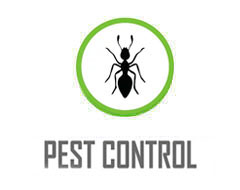Assessing and Removing Squirrels
The first step to removing a family of squirrels from your home is a thorough property assessment. Getting the job done right the first time means taking the time to understand the problem from top to bottom. In order to develop a customized removal, clean up and prevention plan our technicians complete a thorough 35-50 point inspection of your home’s interior and exterior.
Below are some of the things we’ll be evaluating as part of the initial assessment:
- Where are the squirrels living?
- How have they gained access?
- Where might they gain access in the future?
- What sort of damage have they caused?
- Are there babies?
We’re no stranger to climbing ladders and exploring attics for signs of squirrel entry and activity. Our technicians go where the squirrels go to ensure we have a firm grasp of the situation before presenting you with a written quote. Once we’ve completed our assessment we’ll take the time to share with our findings and recommendations for humanely removing the squirrels, cleaning up the mess they’ve left behind and protecting against future entry.
Where do Squirrels Live?
Attics are an ideal nesting location for squirrels. They provide warmth and shelter from the elements as well as protection from humans and predators. Squirrels are excellent climbers and have an incredible leaping ability which makes gaining access to most roofs a breeze. Making their home above ground is just one way squirrels protect themselves in cities and towns. In addition to attics, squirrels also nest in chimneys, exhaust vents and wall cavities.
The first sign that your attic might be home to a family of squirrels is usually the sound of scurrying and scampering coming from inside the attic. Squirrels sleep at night so most homeowners with squirrels living in their attic will describe hearing noises that began first thing in the morning, as the sun rises, and throughout the day as the squirrels come and go. Noises heard mostly at night are more likely to be nocturnal critters like raccoons, rats or mice.
How do Squirrels Get Into Attics?
Squirrels are opportunistic when it comes seeking out shelter and will take advantage of existing openings as well creating their own. Their powerful teeth easily chew through wood, plastic, vinyl and aluminum. Squirrels create holes approximately 3 inches in diameter to comfortably come and go. During the initial assessment our technicians will use their experience and knowledge of squirrel behaviour to look over your entire roofline in search of entry. Finding the entry point is critical to both removing the squirrels and keeping them out long-term.
Below are some of the clues that we look for to determine squirrel entry points:
- Signs of chewing
- Traces of fur
- Staining and paw prints
- What sort of damage have they caused?
- Nesting material
Squirrel Damage
Though small in size, squirrels are capable of causing significant and costly home damage. During the assessment our technicians will explore your attic to take stock of possible property damage and share our findings with you using photos and video.
Squirrels in your attic could lead to:
- Chewing damage to wood, electrical wiring and ductwork
- Water damage from exterior entry points
- Trampled and displaced attic insulation
- Odour issues from urine and feces
Humane Squirrel Removal
After walking our clients though the results of our assessment the next step is a humane removal. Our technicians use targeted and hands-ons methods to remove all squirrels from your attic, including the babies.
The busiest time of year for squirrel activity is during the spring and summer birthing seasons when female squirrels seek out secure places to give birth and raise their babies. Squirrels give birth to babies during spring and can deliver a second litter later in the summer.
Baby squirrels are born hairless with their eyes shut and take up to ten weeks to become fully mobile. During this time baby squirrels can only be removed by hand by accessing the nest. Once we’ve gathered and removed the litter we block the entry point and keep the babies warm in a heated reunion box until their mother returns to relocate them one by one to another den site in the area.








FOLLOW US